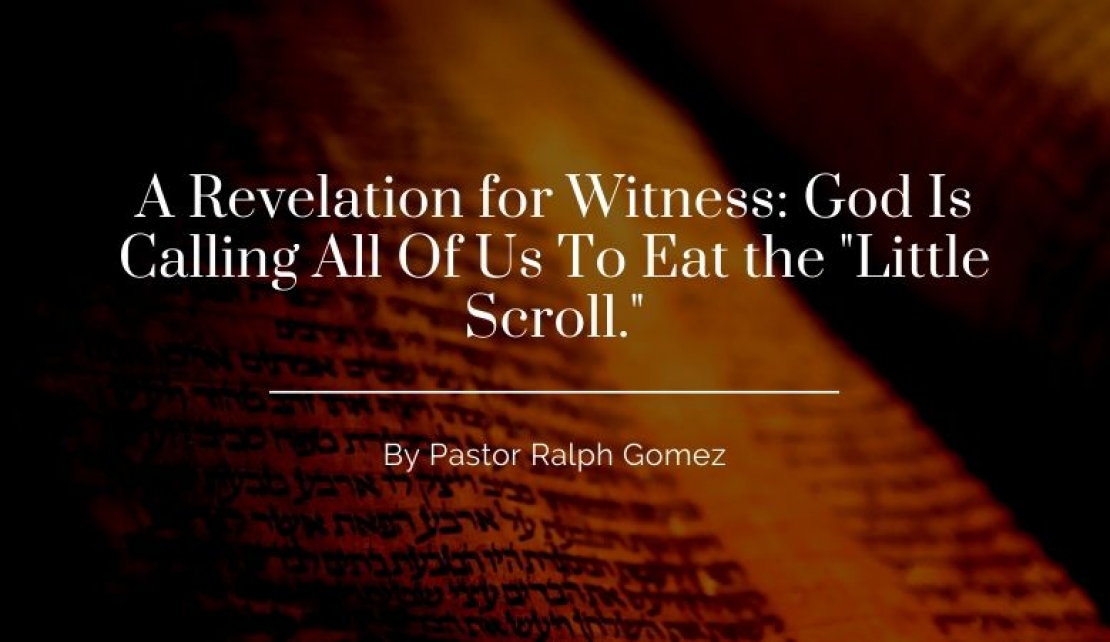Ok, once again, it’s Monday Morning is upon us. But I’m not feeling especially “bluesy” on this day. It may have to do with the Dodgers. I don’t know. They won last night. I’m starting to worry about how baseball affects my emotional state. Pray for me – the postseason is almost here and the last two years have been a bit traumatic – but that’s baseball. It’s a game.
So, OK…let’s talk about my favorite topic – the Book of Revelation – and specifically Chapter 10! Revelation is real – imaginative, vivid representations of the world as it is! After preaching this text yesterday morning, I promised our small flock that I would explain more. I want to start by quoting one of my favorite Bible commentators on the planet – his name is Craig Keener. (Dr. Keener is not only ridiculously bright, an impossibly prolific writer, and a beautiful, Spirit-filled follower of Jesus – but he also happens to attend a Vineyard Church!) He is also among the leading New Testament scholars in the world today. Anyway, he was recently asked about the most important tool for Bible Study. His answer was that “next to the Spirit’s guidance, context.”
This means that we should pray for the Holy Spirit to help us understand, but also, that we should notice the verses, chapters, and the very book we’re studying. When we take this into consideration – Chapter 10’s message of Witness becomes very powerful – and personal.
Here are some points to consider which will help us understand:
1. Revelation Chapters 10-15 are prophetic “interludes” – this means that they are sort of like explanatory intermissions. The flow of the story stops and we’re given background to help us understand what’s happening in the narrative. The author [God and John] want us to see things as they really are. So chapter 10 is a revelation of the call of a New Testament witness. It is very similar to the call of the Prophet Ezekiel in Ezekiel 2. In Revelation 10 – God is calling John…but he is also calling you and me – because, remember this prophecy (the Book of Revelation) is something Jesus give John so “show His servants” – so, we are invited to also “see” and “behold…the mighty angel coming down from heaven.”
2. John is called to Witness and “to prophesy once again” (Rev. 10:11) – but so are we. How do I know this? Because the vision is also for me and for you. John was exiled, weak and old – but his work was not over. Jesus has more for him. BUT THE LORD WANTS JOHN TO “SEE” THE CONTEXT IN WHICH HE IS BEING CALLED. The “Angel” of verse 1 is “a strong angel” – the word translated “strong” from the Greek is “ischuros” which is used in Hebrews 11 to describe those who were “mighty (ischuros) in battle.) This is a warring angel – totally prepared to do battle.
- What does this mean in the context of a call to Witness for Jesus? God wants us to know that we will have some very strong support! This Angel – who I believe to be Jesus Christ Himself – has “set His right foot on the sea and his left foot on the land” – in other words – He has established a beach head on the planet. When the Allied Forces established a beachhead in Normandy on June 6, 1944 – for all practical purposes – the War was over. Hitler was finished – but it would take almost another year of battles and skirmishes to totally defeat the enemy.
- Our prophetic witness is part of a Kingdom Invasion by a very powerful force. The Kingdom of God has come to earth to take over and overthrow the powers of darkness. Chapter 10 is a call to be part of this invading force. Our leader is the “strong angel coming down out of heaven” (Rev. 10:1).
3. Here is why I believe that the “strong angel” is Jesus Christ himself.
a. Keeping in mind what Dr. Keener said about context and the description of this angel – notice this:
i. He is “clothed with a cloud” (verse 1) – Jesus uses this imagery in Mathew 24:30 (which echoes Daniel 7:13 – speaking of the coming of the “Son of Man.”) “Then the sign of the Son of Man will appear in heaven, and then all the tribes of the earth will mourn, and they will see the Son of Man coming on the clouds of heaven with power and great glory. But, even more relevant to context is Revelation 1:7:
“Look, he is coming with the clouds, and every eye will see him, even those who pierced him; and all the peoples of the earth will mourn because of him.” (NIV).
ii. “he rainbow” – mentioned in chapter 4 – which surrounded the throne – is now “upon his head.”
iii. “His face was like the sun” – we immediately think of Matthew 17:2 – the Transfiguration narrative – “There he was transfigured before them. His face shone like the sun, and his clothes became as white as the light.”
iv. “Legs…like fiery pillars” – echoes of the “pillar of fire by night” that echoes Exodus 13:21-22 – this pillar guides Israel in their wilderness journey. Jesus declares in John 12 that he has “come into the world as a Light to that everyone who believes in [Him] would not remain in darkness.”
v. “He was holding the little scroll” (10:2) – the last time we saw this scroll it had just been handed to Jesus – in Chapter 5! At that moment it was sealed. Now it is open in his hand!
vi. “He gave a loud shout like the roar of a lion.” (Rev. 5:5) Again, echoes of chapter 5! The “Lion of the Tribe of Judah…[who has] triumphed!” Again, this is always descriptive of Jesus and Jesus alone.
So why is this being described as an “angel?” One of the most renown commentators on the Apocalypse Joseph Augustus Seiss – an American Lutheran pastor explains it this way:
“In the Old Testament the Son of God is continually described as the Jehovah-angel. We had a somewhat corresponding vision in the first chapter; yet, he who there appeared, announced himself as the First and the Last, the Living One, who became dead and is alive forever. We had an account of an angel in the seventh chapter, and again in the eighth, whom there was reason to regard as none other than the Lord Jesus. We do know that he appears in the Apocalypse as a Lamb, as a Lion, and as an armed Warrior, and there is nothing to hinder his appearance also as an Angel.” (The Apocalypse: Lectures on the book of Revelation, 1900).
There is so much in this chapter…I will pause for now and continue again later this week. It was necessary to lay some groundwork for what will follow.
In my next blog I will explain my view of verses 3-4 – the “seven thunders” which John hears when the Lion roars. What are these thunders? Ah! You will have to come back in a day or so to find out.
Blessings and peace,
Pastor Ralph



